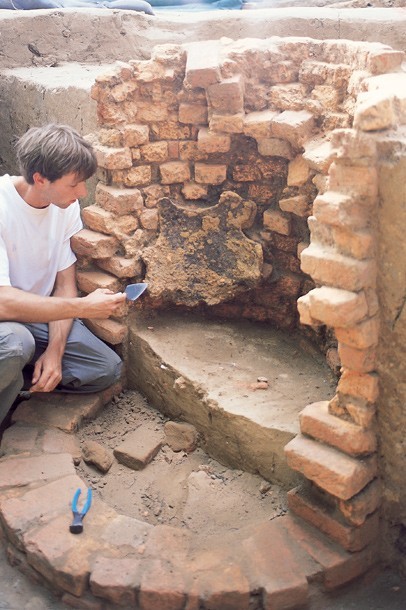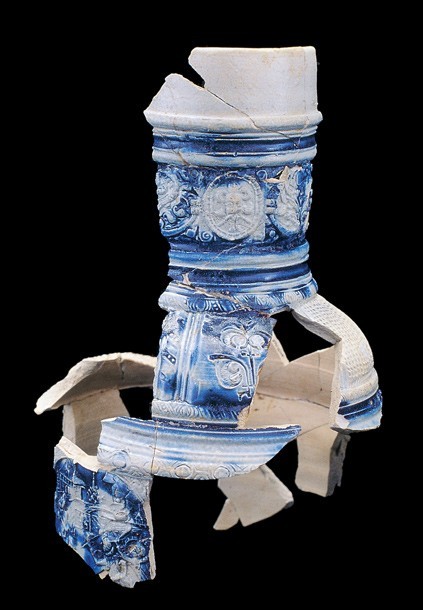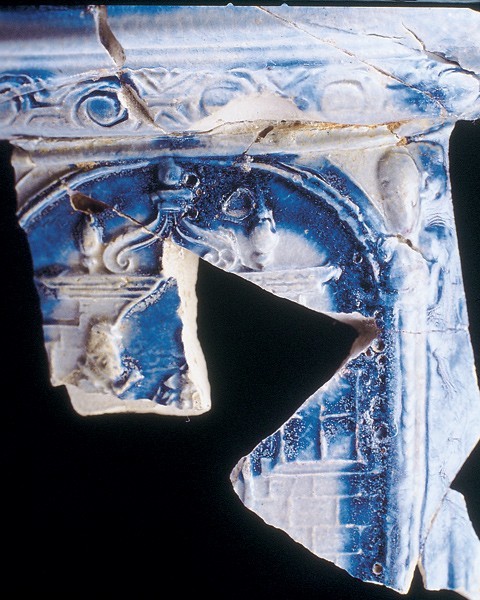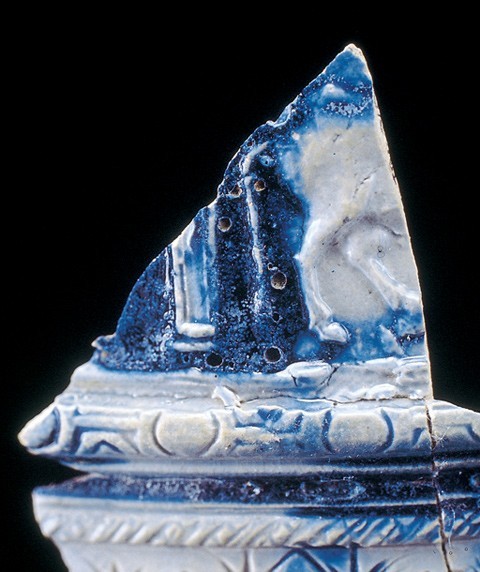
Association for the Preservation of Virginia Antiquities archaeologist Danny Schmidt excavating a breastplate from the top of an early seventeenth- century brick-lined well at Jamestown, Virginia. The well was full of military and domestic iron objects. Sherds of an early Westerwald stoneware jug depicting the biblical story of the Prodigal Son were found scattered throughout the well. (Courtesy, Association for the Preservation of Virginia Antiquities.)

Jug, Grenzau, Germany, 1618. Salt-glazed stoneware. This example parallels the archaeological Jamestown jug. The legend indicates that it was produced in 1618 in Grenzau.

Jug, probably Grenzau, ca. 1618. Salt-glazed stoneware. (Photo, Gavin Ashworth.) This archaeological jug is comprised of sherds recovered from the early seventeenth-century well at Jamestown.

Fragment of the jug illustrated in fig. 3. This is part of the first panel in the narrative showing the Prodigal Son departing on horseback with his inheritance. The German word Historia (history) appears in the arcade over the panel.

Fragment of the jug illustrated in fig. 3. The final panel on the jug, it depicts the Prodigal Son making amends with his brother.

Fragment of the jug illustrated in fig. 3. The first sherd of the jug found in the well, it shows the rear end of an animal, which later proved to be the fattened calf being led to slaughter for the Prodigal Son’s welcome-home feast.

Fragment of the jug illustrated in fig. 3. This panel displays the initials “Z L” on a plaque. Once thought to represent the initials of the jug’s maker, they are now recognized as being on a sign indicating the way to the brothel (Zur Lilie) in the Prodigal Son narrative.
